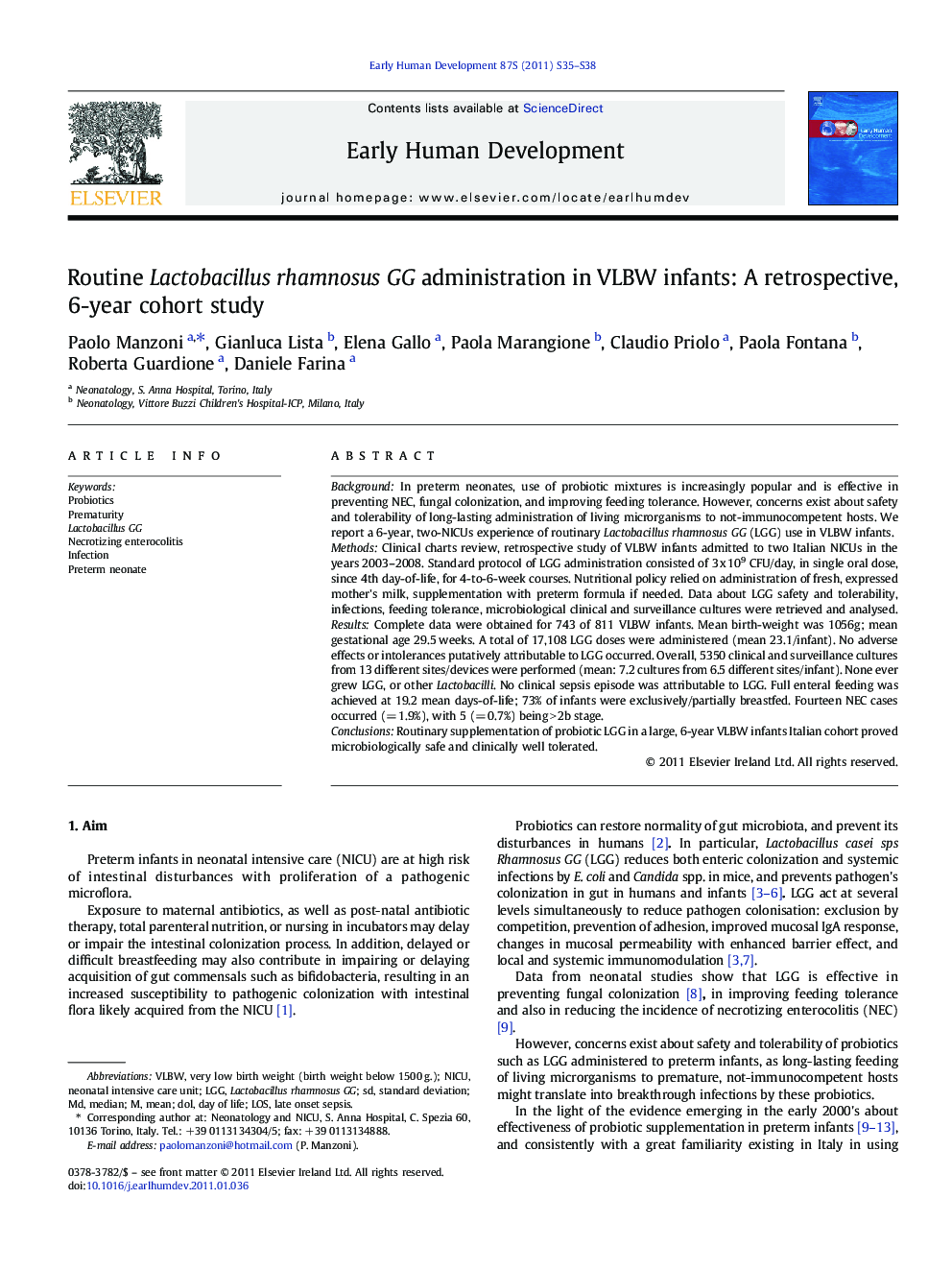| Article ID | Journal | Published Year | Pages | File Type |
|---|---|---|---|---|
| 3917458 | Early Human Development | 2011 | 4 Pages |
BackgroundIn preterm neonates, use of probiotic mixtures is increasingly popular and is effective in preventing NEC, fungal colonization, and improving feeding tolerance. However, concerns exist about safety and tolerability of long-lasting administration of living microrganisms to not-immunocompetent hosts. We report a 6-year, two-NICUs experience of routinary Lactobacillus rhamnosus GG (LGG) use in VLBW infants.MethodsClinical charts review, retrospective study of VLBW infants admitted to two Italian NICUs in the years 2003–2008. Standard protocol of LGG administration consisted of 3 x 109 CFU/day, in single oral dose, since 4th day-of-life, for 4-to-6-week courses. Nutritional policy relied on administration of fresh, expressed mother's milk, supplementation with preterm formula if needed. Data about LGG safety and tolerability, infections, feeding tolerance, microbiological clinical and surveillance cultures were retrieved and analysed.ResultsComplete data were obtained for 743 of 811 VLBW infants. Mean birth-weight was 1056g; mean gestational age 29.5 weeks. A total of 17,108 LGG doses were administered (mean 23.1/infant). No adverse effects or intolerances putatively attributable to LGG occurred. Overall, 5350 clinical and surveillance cultures from 13 different sites/devices were performed (mean: 7.2 cultures from 6.5 different sites/infant). None ever grew LGG, or other Lactobacilli. No clinical sepsis episode was attributable to LGG. Full enteral feeding was achieved at 19.2 mean days-of-life; 73% of infants were exclusively/partially breastfed. Fourteen NEC cases occurred (= 1.9%), with 5 (= 0.7%) being > 2b stage.ConclusionsRoutinary supplementation of probiotic LGG in a large, 6-year VLBW infants Italian cohort proved microbiologically safe and clinically well tolerated.
